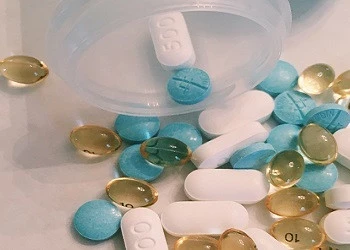Adopting single-use systems in biomanufacturing
Jerry Martin of the Bio-Process Systems Alliance, explains how single-use systems are changing the biomanufacturing landscape
Add bookmark
Jerry Martin, Senior Vice President for Global Scientific affairs at Pall Life Sciences and Chairman of the Board of the Technology Committee for the Bio-Process Systems Alliance, explains how single-use systems are changing the biomanufacturing landscape.
Pharma IQ: Could you tell us a bit about your current role?
J Martin: I’m responsible for global technical communications in filtration and separation, including single-use products and applications in biopharmaceuticals market as well as pharmaceutical industry and regulatory liaison.
As part of that I’m involved in the Bio-Process Systems Alliance (BPSA), where I’m the chairman of the board and the technology committee. BPSA is an industry trade association focused on single-use with members from buyers and users and I work along with the other directors to guide the trade organisation in facilitating implementation of single-use systems, developing best practice guides on topics like quality testing and radiation disposal, extractables and other topics.
Pharma IQ: What would you say are the growth drivers shaping the future of biomanufacturing?
J Martin: I think one of the biggest challenges in biomanufacturing right now is cost reduction and that is helping to grow the industry by reducing the cost of manufacturing drugs and ultimately the cost of drugs to patients. Some of the other factors are the advanced technology that developed biopharmaceuticals for higher titers and make them in smaller batches. I think in the future we’ll see more targeted, personalised medicines, new vaccines and those are all areas of growth in biomanufacturing.
Pharma IQ: What trends for single use biomanufacturing technologies have you seen in recent years?
J Martin: There’s an increased acceptance in single-use biomanufacturing for a lot of applications ranging from media and buffer mixing and filtration, bioreactors for mammalian cell growth, module with single use depth filter capsule systems for cell removal, membrane chromatography for final polishing and also down to the final finishing end with scale processing and formulation and filling. So the trends are for all of those applications to move into single use.
Pharma IQ: What are the advantages for using single use systems for biomanufacturing?
J Martin: I could probably summarise them by saying that I think for regulators the advantages are seen as enhanced containment and reduced risk of product of batch 5 cross contamination. That was really a primary driver from the regulatory side.
As drug manufacturers began to explore this they came to realise there were advantages in lower capital costs, more rapid implementation, installation, improved facility utilisation and productivity and also reduced water and energy consumption, reduced disposable cleaning chemicals and waste water and ultimately reduced carbon footprint.
Pharma IQ: What factors should you consider when implementing a single use technology?
J Martin: This is hard to answer in just a few minutes but certainly appropriate process design and materials compatibility is something that should be considered early on. Then the added components are selected to look for adequate vendor data on extractables; that’s an important thing that will help in implementation and then further vendor quality systems and assurance supply are very critical.
Pharma IQ: What would be your top three tips for implementing a single use technology?
J Martin: Beyond the selection of individual components, it’s important to work with an experienced system integrator who is familiar with GMP and biomanufacturing processes and can provide support services for validation, troubleshooting, not just someone who can connect tubing filters and bags for you.
Second tip would be to consider, dual sourcing capabilities and other supplier initiatives to secure the supply chain, and the third would be to perform adequate risk assessment with extractable data from the supplier. As I mentioned earlier extractable leachables is one of the primary concerns of regulators and most of the adverse observations around single use has sited the lack of data rather than inadequate data.
Pharma IQ: How can we address the environmental impact of single-use manufacturing?
J Martin: First I think it’s important to recognise that despite the immediate concern that the increase in solid waste is going to have an adverse environmental impact, studies have shown that single-use manufacturing actually can reduce environmental impact of biopharmaceutical manufacturing due to the reduction of water and energy requirements typical of steaming plates, cleaning plates and reusable processes.
The solid waste itself is best addressed by sending it to a waste energy facility that can recycle the energy from the waste plastics into hot water and electricity. Many people don’t realise that single-use system plastics are cool burning and release as much energy as gasoline.
Pharma IQ: What do you think the landscape for single-use manufacturing technologies will look like in five years time?
J Martin: Single-use manufacturing today has been widely applied in clinical batch manufacturing and larger scale manufacturing is still, in many cases just in the adoption mode. In five years we can expect to see many newly approved biopharmaceuticals being manufactured in single-use systems all the way through to final filling. Even some of the established drugs as they expand in capacity may transfer over into single-use manufacturing systems.
Quick links
- Single-use systems: how to overcome challenges and mitigate risk in bioprocessing
- How to shift to single-use assemblies to protect complex drug products
- Ask the expert: Single-use systems
Get exclusive access to member-only articles, reports, videos, interviews, webinars and other premium content from industry experts and thought leaders by signing up to Pharma IQ here.




















